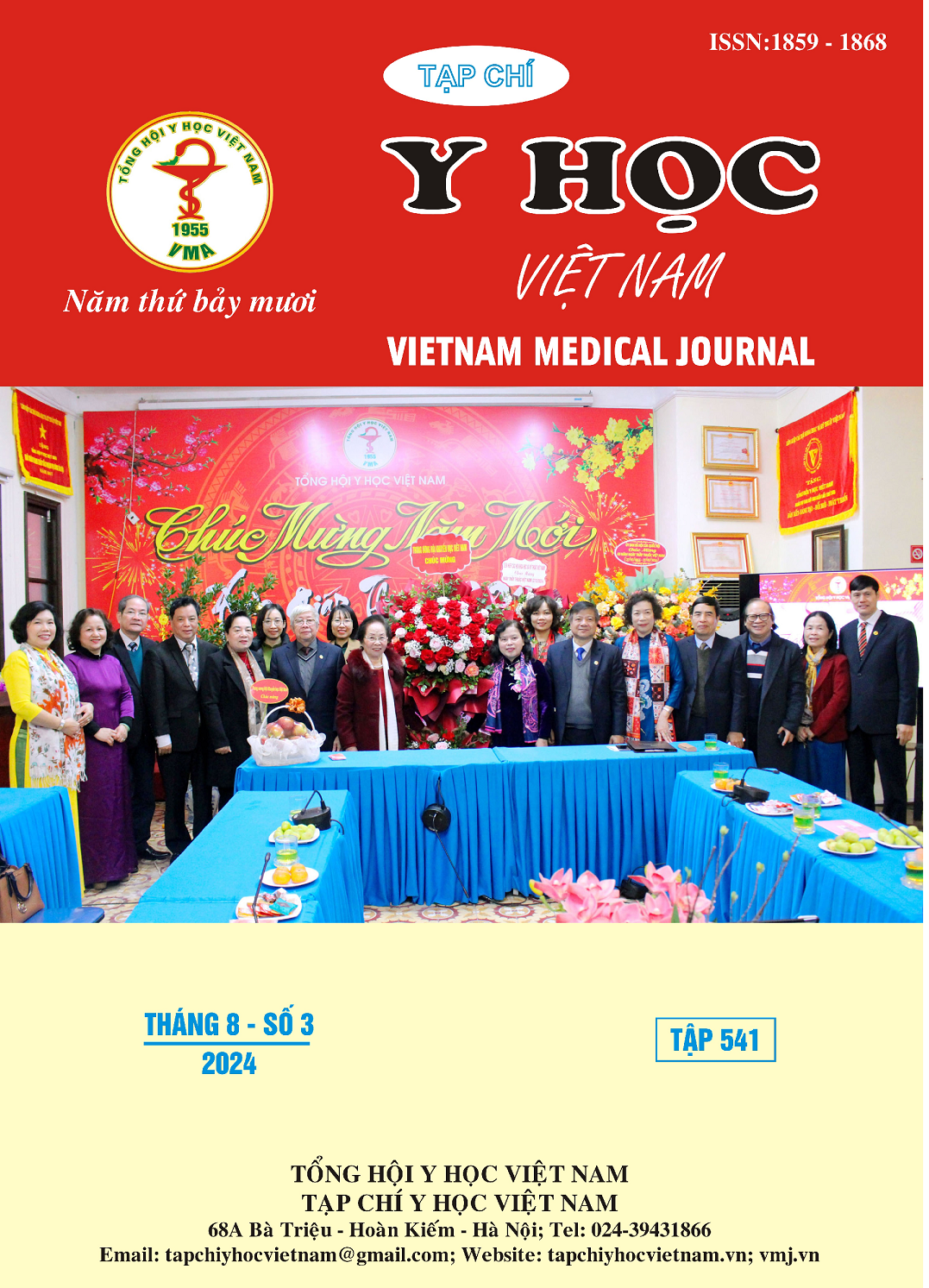OUTCOMES OF INVASIVE CANDIDA INFECTIONS IN NEWBORNS AT CHILDREN'S HOSPITAL 2
Main Article Content
Abstract
Introduction: Invasive Candida infections (ICI) represent a significant health burden in Neonatal Intensive Care Units (NICU), contributing substantially to neonatal morbidity and mortality. Challenges in early diagnosis and treatment are notable, and data on the outcomes of such infections in Vietnam are sparse. This study evaluates the consequences of ICIs among neonates. Methods: This retrospective case series utilized medical records from neonates diagnosed with ICI in the Neonatal Department and NICU of Children's Hospital 2 from April 2021 to June 2023. Results: A total of 104 neonates were diagnosed with ICI, encompassing 106 episodes. The majority of these cases involved preterm infants (83 cases; 79.8%), with a median gestational age of 31.0 [27.0; 36.0] weeks and a birth weight of 1400g [1050; 2475]. The median age at diagnosis was 24.5 [17.0; 39.3] days. C. parapsilosis was the most frequently encountered species (48/106, 45.3%), followed by C. albicans (34/106, 32.0%). Isolated bloodstream infections were the most common manifestation, comprising 89.4% (93/104) of cases. The overall mortality rate was 35.6% (37/104), with the highest rates observed in neonates with extremely low birth weight (<1000g) at 50% (8/16), in those with birth weights ≥1000g at 33% (29/88), in cases with other sites beyond blood infection at 80% (4/5), in multi-site ICI (including bloodstream ICI) at 50% (3/6), and single bloodstream infection at 32.3% (30/93). Conclusion: ICI predominantly affects preterm neonates, with C. parapsilosis as the leading pathogen. The mortality associated with these infections is alarmingly high, especially in neonates with very low birth weights, multiple site infections, or non-bloodstream sites of infection, underscoring the need for targeted interventions and improved management protocols
Article Details
Keywords
invasive Candida infection, neonate, outcomes.
References
2. Stoll BJ, Hansen N, Fanaroff AA, et al. Late-onset sepsis in very low birth weight neonates: the experience of the NICHD Neonatal Research Network. Pediatrics. Aug 2002;110(2 Pt 1):285-91. doi:10.1542/peds.110.2.285
3. Bassetti M, Azoulay E, Kullberg B-J, et al. EORTC/MSGERC definitions of invasive fungal diseases: summary of activities of the Intensive Care Unit Working Group. 2021;72 (Supplement_2):S121-S127.
4. Nguyễn Tấn Hải NTTL, Huỳnh Thị Duy Hương. Đặc điểm nhiễm nấm Candida huyết ở trẻ sơ sinh tại bệnh viện Nhi Đồng 2 từ tháng 10/2004 đến tháng 12/2005. Tạp chí y học TP Hồ Chí Minh. 2007;11 (1)
5. Thái Bằng G. Đặc điểm dịch tễ học lâm sàng nhiễm nấm ở trẻ sơ sinh và hiệu quả điều trị dự phòng bằng Fluconazole trên trẻ đẻ non.(Ngày công bố: 19/05/2021). 2021.
6. Saiman L, Ludington E, Dawson JD, et al. Risk factors for Candida species colonization of neonatal intensive care unit patients. The Pediatric infectious disease journal. Dec 2001;20(12): 1119-24. doi:10.1097/00006454-200112000-00005
7. Barchiesi F, Orsetti E, Osimani P, Catassi C, Santelli F, Manso E. Factors related to outcome of bloodstream infections due to Candida parapsilosis complex. BMC infectious diseases. Aug 9 2016;16:387. doi:10.1186/s12879-016-1704-y
8. Benjamin DK, Stoll BJ, Gantz MG, et al. Neonatal Candidiasis: Epidemiology, Risk Factors, and Clinical Judgment. Pediatrics. 2010;doi:10.1542/peds.2009-3412


